For romantics like me, time is the architect’s best collaborator.
Decay transforms the banal into high art: Wallpaper and paint crackle into baroque curls; plaster softens to dust; floorboards bend; stone stains; water leeches into crevices and freezes, prying loose bricks and mortar. The illustrious Swiss-French architect Le Corbusier stood in awe of these transformations and chose to collaborate with time. His design for the hot, humid climate of Chandigarh, India, features materials and details that he thought would improve with age. Seventy years later, a deep patina caused by an accretion of moss and mold gives the young concrete city an air of timeless grace, much like that of the buildings of ancient Rome.
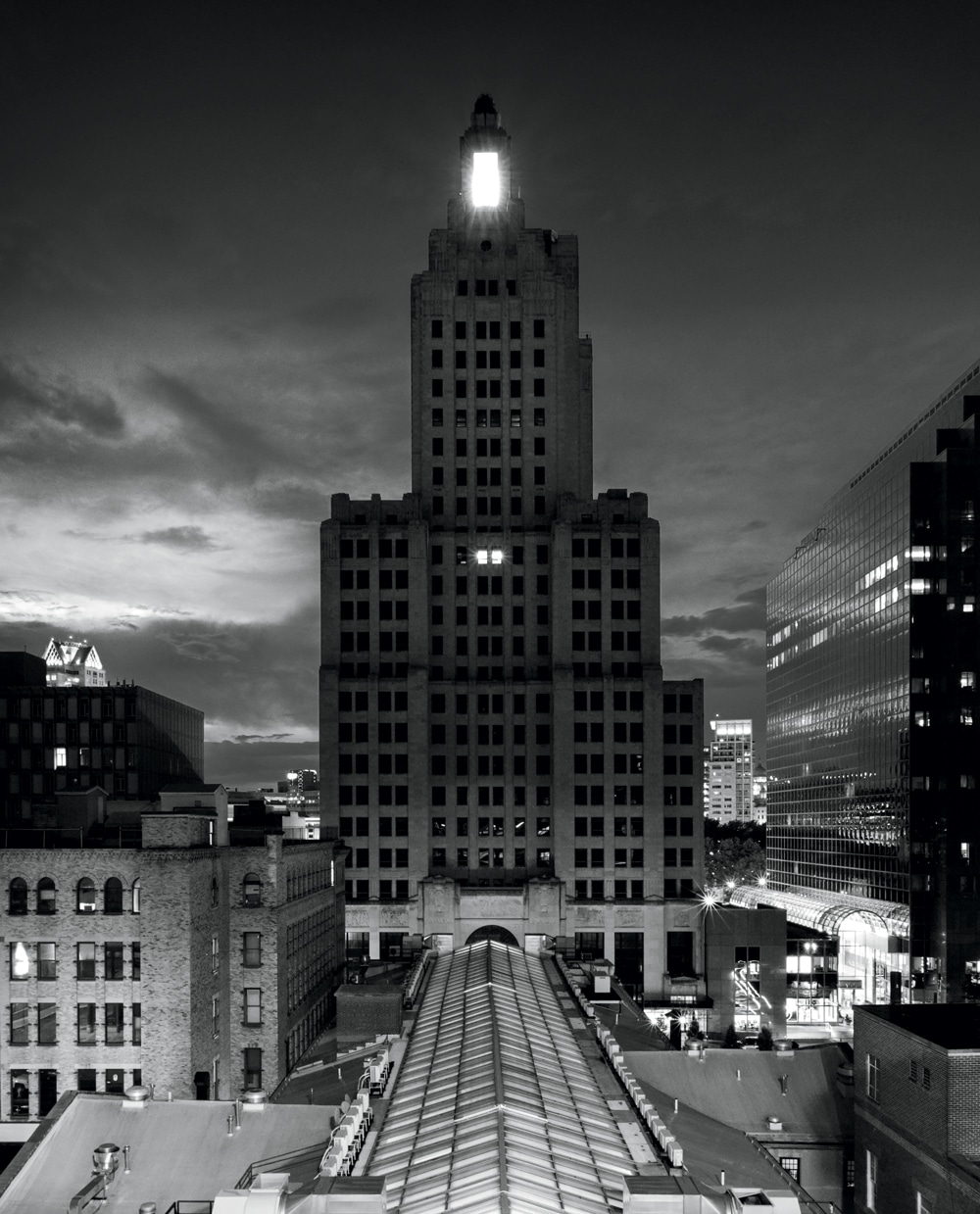
Erected in 1928, the 428-foot-high Industrial Trust Building is Rhode Island’s tallest structure and an essential piece of the Providence skyline. Yet this skyscraper, affectionately known as the Superman Building, has stood vacant for most of the past decade.
Hassan Bagheri
But there’s not much charm in an abandoned skyscraper. As a testament to human failure on a monumental scale, the empty tower is an object of horror. Its dusty halls and grounded elevators rebuke the captains of industry who once conceived and financed it, the thousands who built it, the millions who walked around and through it every day. The abandoned skyscraper proves that fortunes are fluid and the future is unknowable.
In Providence, Rhode Island, there stands a Jazz Age bank tower prominently and flagrantly abandoned in the heart of the city. Officially known as the Industrial Trust Building, it was dubbed the Superman Building for its likeness to the fictional Daily Planet headquarters. Empty since 2013, the 428-foot-tall Art Deco skyscraper has loomed over Providence like a bathtub gin hangover.
I first learned about the Superman Building when the National Trust for Historic Preservation put it on its “Most Endangered Historic Places” list in 2019, one of 11 threatened sites named that year, along with Nashville’s Music Row and the National Mall Tidal Basin. In the 33 years that the National Trust has been compiling this annual list, the Industrial Trust Building is the only skyscraper to have earned the dubious distinction. By 2019, the building had sat vacant for six years after Bank of America, its sole tenant, moved out.
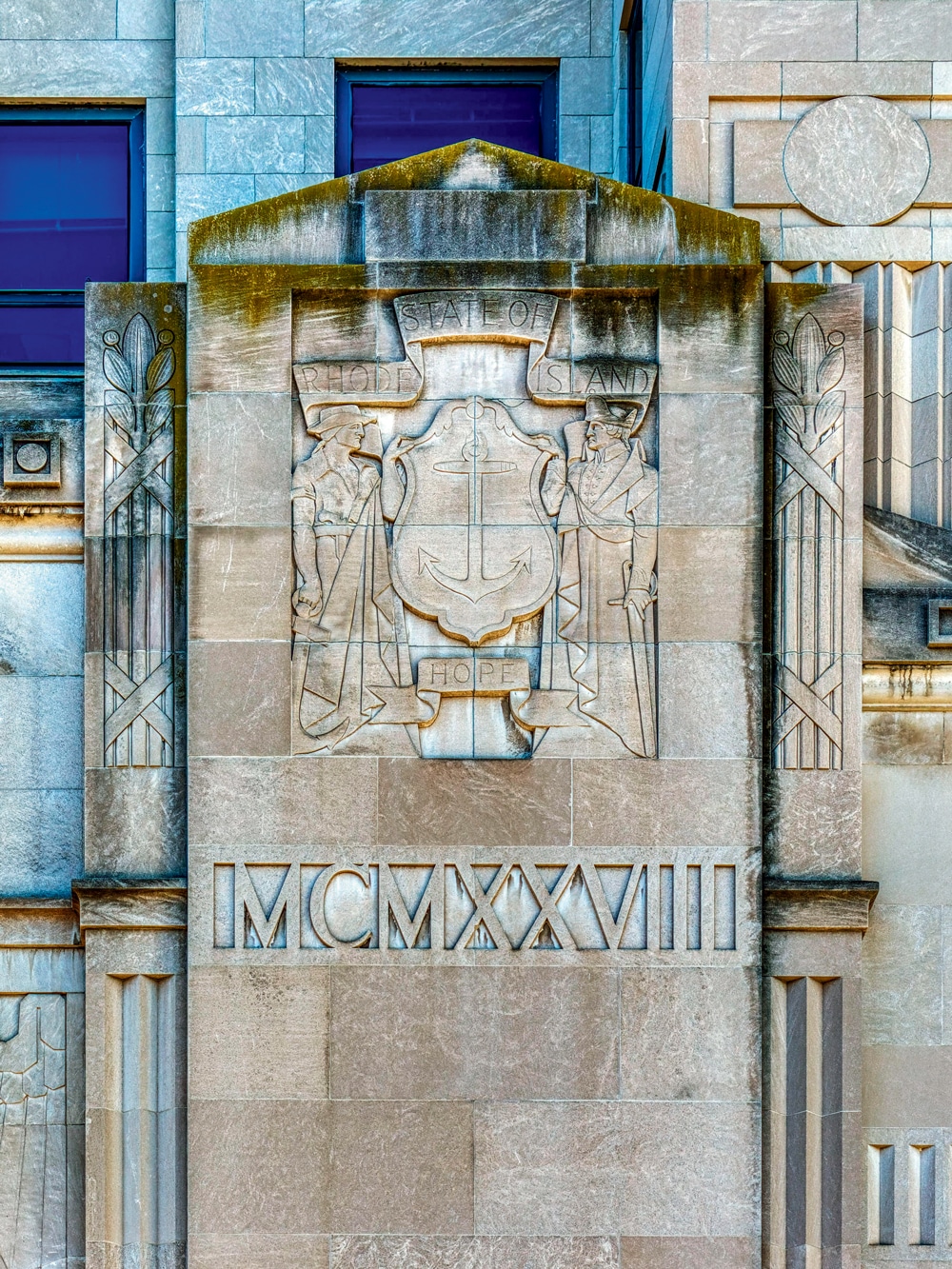
A carving of the Rhode Island coat of arms near one of the Superman Building’s entrances.
Kenneth Grant/Alamy Stock Photo
When I first began researching the Industrial Trust, its future was uncertain and it seemed to have few champions. The first person I reached out to was Gabriel Feld, architecture professor at the Rhode Island School of Design (RISD), and although he has a clear view of the building from his Providence apartment, he admitted he hadn’t given it much thought. Talking over Zoom during pandemic lockdown one gray spring day, he swung his laptop around so that I could see his view and confirm the building in question. Yes, I told him, that’s it, the one with the lantern. Providence’s tallest edifice.
To be fair to Feld, it’s not uncommon for us to “unsee” abandoned buildings, even when they’re right in front of us. There’s no fun in confronting a portent of doom every morning over coffee and a croissant.
But my inquiry did prompt Feld to do a little more research. A few days after our conversation, he wrote in an email: “I must confess I hadn’t realized that, built in 1928, our little skyscraper preceded the big New York ones, like the Chrysler Building, by a couple years.”
That’s when it hit me: Could the Superman Building be America’s first modern skyscraper?
Feld was right: When it was completed, Providence’s tower was heralded as a major triumph, one that preceded its more famous New York cousins: the Empire State (1931), the General Electric Building (1931), Rockefeller Center (1933). The tower was such an important declaration of America’s arrival on the world stage that it would be featured on the cover of Architectural Forum. In October 1928, the month it opened, the editorial board of Providence Magazine wrote, “The completed structure is a striking demonstration of the company’s confidence in the growth and enduring soundness of the City, the State and Country.”
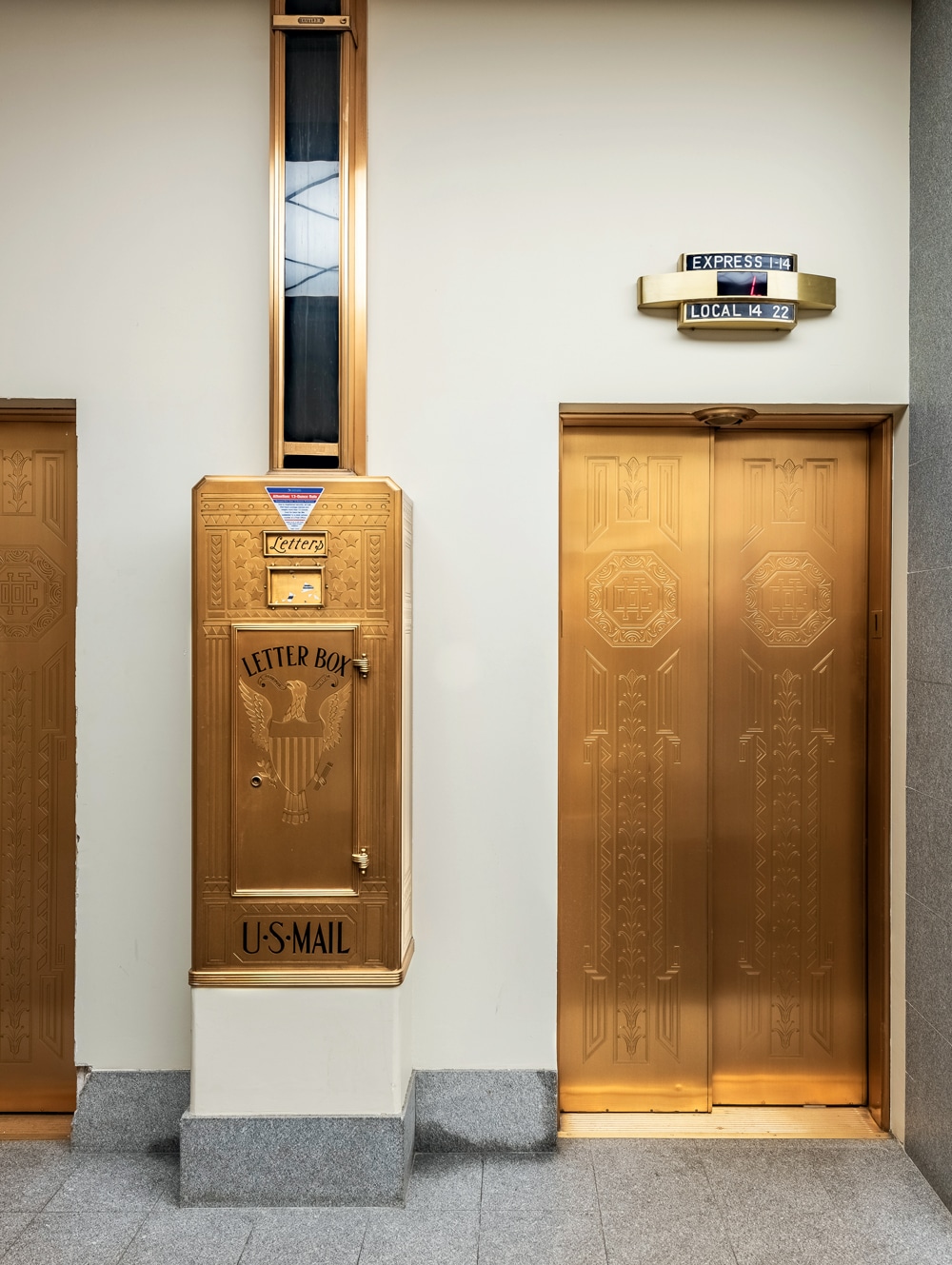
Original Art Deco details still gleam inside.
Mike Braca
But Providence’s fortunes shifted. For much of the 20th century, the city struggled to attract capital. It was underpopulated and mired in crony politics and landed near the bottom of many city rankings. The empty Superman Building prevailed over the city like a broken hero, powerless to rescue itself, much less anyone else.
Turns out, however, there are heroes among us, although most of them wouldn’t look so great in Spandex. Thanks to them, the Superman Building will be saved. In April, Governor Dan McKee stepped up to the State House mic to detail one of the most elaborate financing schemes in history—the culmination of a years-long effort—that will finally give Superman a much-needed mission.
__
Before the tower’s fate was secure, I had gone to Providence to meet Rachel Robinson, director of preservation for the Providence Preservation Society, and see how the place was holding up. We were joined by Maia Farish, an ardent champion of downtown Providence who encouraged her late husband, the former president of Roger Williams University, to create a second campus in the heart of the city to strengthen town-gown partnerships within the community.

Rachel Robinson, director of preservation for the Providence Preservation Society, which has worked on ways to save the landmark for future generations.
Providence Preservation Society
When I exited the train station, I was gobsmacked by the tower’s majesty. Empty or not, it dominates the skyline. In fact, everywhere we walked throughout the city that day, there it was, a specter of Providence’s storied past rendered in stone, implicating all those who try to ignore it as they go about their lives.
Unlike many of New York’s Deco towers, this one is highly dimensional, stepping back four times on every side, like a ziggurat. It culminates in a massive neoclassical cupola that houses a giant green lantern, once topped with a 7.5-ton crown of stone eagles; these were unceremoniously hacked off in the 1950s at the bank president’s request. In their stead now stands a sad, quizzical, and somewhat dirty nub.
Even 100 years later, the building harbors secrets. Hidden above the top usable floor, tucked behind a high parapet 400 feet above the ground, crouches what looks like the cabin of an airship. Drone video and photographs reveal that this oddity was built as the bank president’s private speakeasy. The once sumptuous room has decayed beyond recognition, with its peeling leather walls and curling plastic ceiling. Needless to say, one gets a privileged view up there.
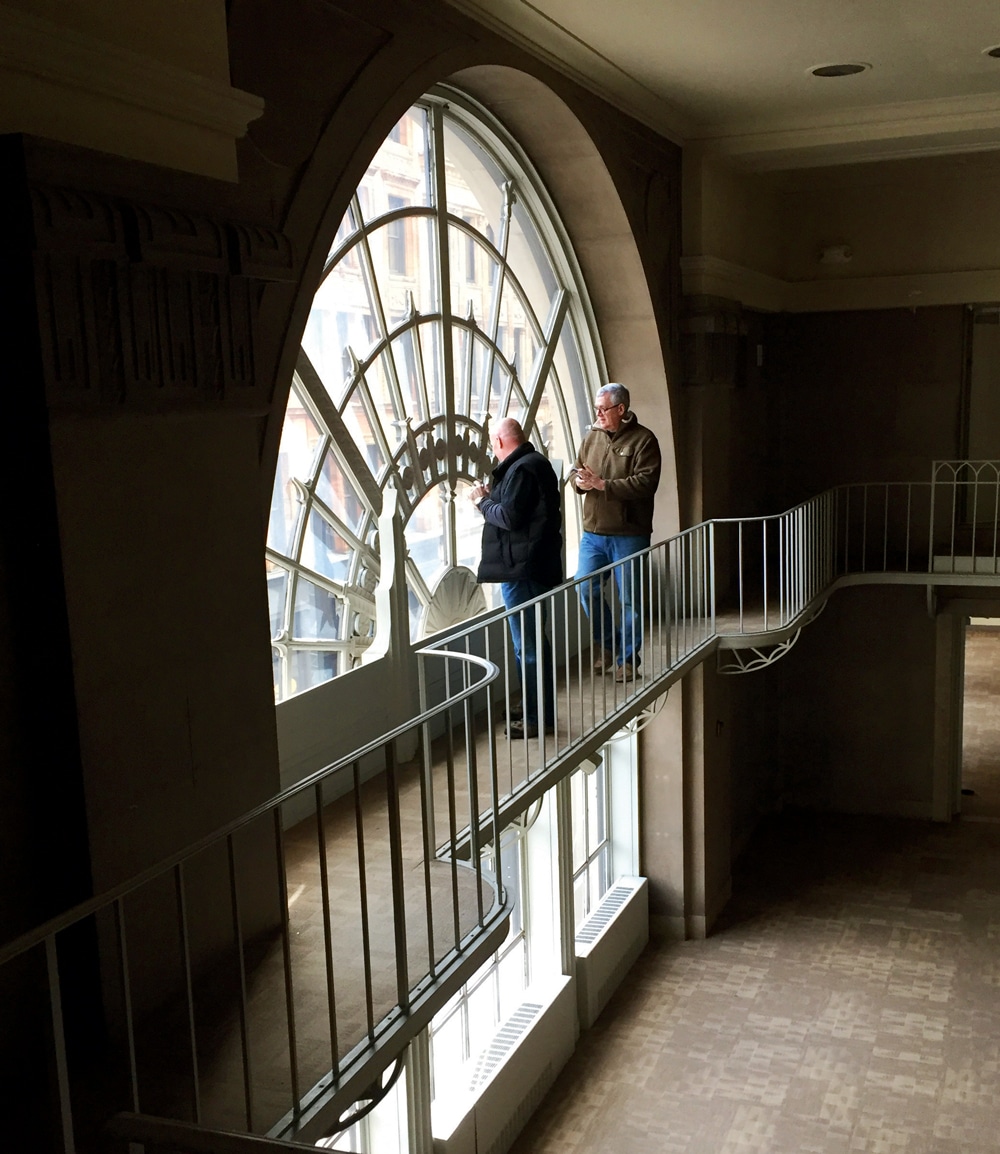
Looking out through one of the windows in the soaring lobby.
Jason Bouchard-Nawrocki
Robinson, a historian and Tennessee native, had been a vocal Superman Building advocate. She pointed out that the building had survived the Great Depression, urban renewal, the flight of capital, and Providence’s colorful politics (convicted felon Buddy Cianci ruled as mayor for nearly 22 years).
Hoping to keep discussion about the building’s fate alive, in 2019 she partnered with Liliane Wong, the head of RISD’s interior architecture program, to explore how the tower could be reconfigured to save this piece of history and revitalize downtown Providence. Wong’s students came up with fantastic visions, including converting it into an elaborate urban farm (very hip!), an indoor amusement park, or a retirement community.
At the time, the building’s owner, David Sweetser, was optimistic about adaptive reuse and granted the RISD students a tour. When I appealed to him for access last year, his enthusiasm seemed to have waned. In response to my request, his representative, Bill Fischer, wrote to me, “Unfortunately we are not providing tours of the Superman Building or updates on the building’s development status at this time. If this dynamic changes I will keep you in mind.”
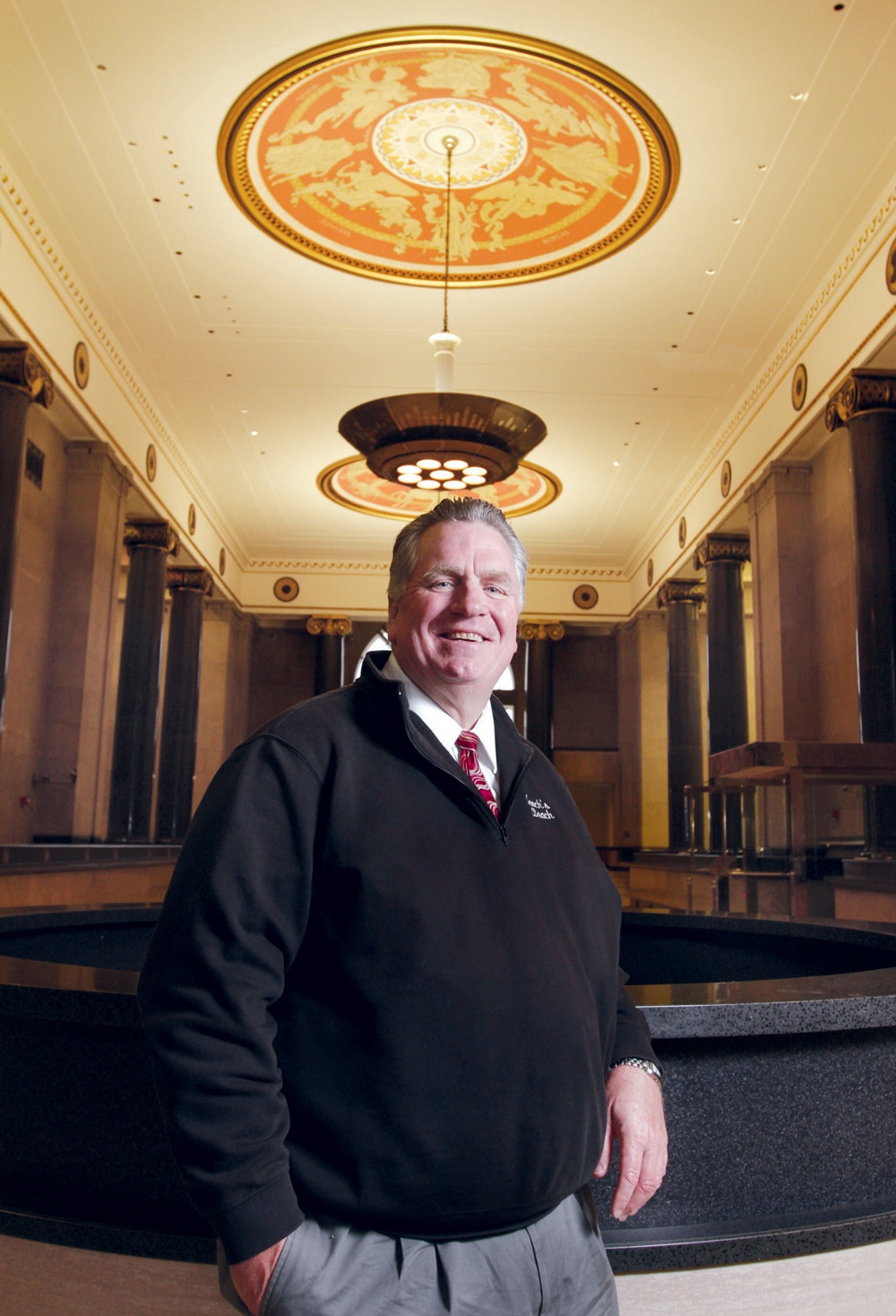
The building’s owner since 2008, David Sweetser of High Rock Development recently inked a deal with the state of Rhode Island to convert the space into residential units.
Kris Craig – USA Today Network
Which is why in May of last year, the best that Robinson, Farish, and I could do was peer through the tower’s dirty glass front doors, cupping our hands to see into the darkness and try to imagine what it would be like to be in there. We knocked until a young security guard cracked open the door enough to send us packing, though he was kind enough to inform us that the building wasn’t haunted.
Disappointed, we walked around the Industrial Trust Building, admiring its 16 carved limestone friezes, which chronicle the industrialist’s version of Rhode Island history, from Roger Williams’s landing to various early pursuits—hunting, iron working, and fishing—to industrial innovations, including a steamboat and a locomotive.
Through Wong’s students’ photos, drawings, and videos, I could get a sense of the interiors. Free of columns and elevator shafts, the main entrance served as a thoroughfare from Exchange Place and Westminster Street, just as its predecessor, the old Butler Exchange, had done. An enormous banking room still showcases stylized portraits of Rhode Island’s elites, including General Nathanael Greene, Samuel Slater, and Commodore Oliver Hazard Perry.
I’d once toured another vacant Jazz Age bank tower when I was in architecture school in the ’90s, which helped fill in some of the blanks. Built by the Philadelphia Savings Fund Society in 1932, that tower has been lionized by generations of architects as the first International Style skyscraper built in the United States. When we walked its corridors, the building had sat vacant for seven years, yet it looked like the bankers, lawyers, and secretaries had just left for the day. In offices, crumpled paper still sat in wastebaskets. But the vault in the basement looked like a crime site. Stepping through heavy gates and a foot-thick steel doorway, we saw thousands of safe-deposit doors gaping open, paper and keys everywhere. More than a few people, it seemed, had gone through them, hoping to discover a forgotten five-carat diamond or a wad of bootlegger cash.
__
So how did practical Providence come to host America’s first true Art Deco masterpiece? The building’s story begins shortly after the Civil War, when Samuel P. Colt, a lawyer and the nephew of the gun manufacturer from whom the Colt .45 got its name, took $500,000 of investors’ money to establish a bank in the rapidly growing city. Colt was a New Jersey native who, as an adult, had moved to Bristol, Rhode Island, where his mother’s family, the DeWolfs, had amassed a prodigious fortune in the slave trade (much like the Browns, who gave so much money to the local school that it was renamed in honor of its benefactors). Between 1709 and 1807, nearly 1,000 slave voyages were financed or undertaken by Rhode Island’s merchants, resulting in the theft of over 106,000 people from their homelands in Africa. That’s about 60 percent of all the humans brought to America and enslaved. Rhode Island’s slave traders continued to run human smuggling operations, even after the trade was officially outlawed.
Following emancipation, that fortune was invested in manufacturing and Providence became a booming industrial and banking hub. The politically and financially connected Colt founded his bank and shortly thereafter was designated the receiver of a bankrupt rubber company. He worked his connections to consolidate his holdings into the United States Rubber Company. When Ford’s Model T rolled off the assembly line starting in 1908, demand for rubber soared, and Colt became very rich indeed. By the time Colt died in 1921, the Industrial Trust Company boasted $150 million in assets, over $2 billion in 2022 dollars.
Colt lived a blessed life—he was always at the right place at the right time. During his lifetime, the city of Providence thrived. In 1900, the city’s 175,000 inhabitants, many of them immigrants from Eastern Europe, produced machined parts, jewelry, and textiles in long, low buildings that sprawled out from the city’s center. Freight trains rumbled behind the “Chinese Wall” of old Union Station, belching black coal smoke, feeding raw materials to Providence’s factories, and exporting Providence-made goods across America. Along the river, ships were laden with Rhode Island goods and carried them around the world. Downtown bustled with captains of industry, factory workers, and those who served them: the shopkeepers, dressmakers, bankers, and peddlers.
When Colt died, Providence seemed to have everything. Except its own tower.
Some 180 miles away, New York City’s preposterously tall buildings reached for the sky. An insatiable demand for Manhattan real estate drove the building frenzy; company presidents and boards raced to grab a piece of that mythical skyline for themselves. The Metropolitan Life Insurance Company’s 700-foot tower was hailed as the world’s tallest building when it was built in 1909; it was eclipsed just four years later by the Woolworth Building, an elaborately decorated 792-foot tower that cast long shadows over the frenzied city.
Following Colt’s death, the board of the Industrial Trust Company galvanized Providence’s upward climb by moving operations from its dowdy downtown headquarters, built in 1894, to a brand-new tower opposite Union Station. That’s where an enormous, elaborately festooned Second Empire pile called the Butler Exchange Building had loomed since 1873, with its mansard roofs and Italianate detailing.
In its place would rise a new, modern tower. The bank would occupy the first four floors and the top three—the highest floor serving as the bank president’s private office. The rest of the building would be rented out to other businesses. But what would this new tower look like?
__
Design in the Twenties expresses the tension between innovation and nostalgia for the prewar order. The future—with its recorded music, telecommunications, moving pictures (with sound!), and flying machines—was regarded with a mix of wonderment and dread. If 20th-century machines could be used to topple Europe’s 1,000-year-old monarchies in just a few years, what would replace it? Could America’s unique brand of democracy and diplomacy lead to an era of peace and prosperity? And what role would technology play in the postwar, capitalist-driven future?
Americans, eager to reassure the world that they were prepared to lead, wrapped themselves in old-world grandeur. Empires built on consumer goods—radiators, cars, dime stores, and tabloids—erected their monuments to industry festooned with ancient motifs, subverting their modern roots, camouflaging their steel frames in gothic arches and tracery or neoclassical colonnades and porticoes.
All those newly carved gargoyles, ornate cornices, and baroque spires were designed to signal durability. As late as 1925, when Yale University commissioned the construction of its huge residential quadrangle, the school defaulted to collegiate gothic. In fact, Yale would be one of the last American universities to employ what one contemporary account referred to as “an orgy of meretricious medievalism and stale iconography.”
On architects’ drawing boards, an emergent modernism competed with fusty nostalgia. These stylistic tensions would be aired in public when the publisher of the Chicago Tribune launched an international competition for the design of his paper’s new headquarters in 1922. Architects from around the world submitted proposals, some traditional, some fantastically futuristic. First place went to New York architects Raymond Hood and John Mead Howells, who cloaked their tower’s steel-frame lattice with flying buttresses and tracery, complete with a compact Notre Dame–like topper.
But it was the second-place winner, Finnish architect Eliel Saarinen, who got all the design buzz. Unlike Hood and Howells’s nostalgia-fest, Saarinen’s proposal had a thoroughly modern soul. In design and execution it was an unabashed celebration of verticality and modernity. Lacking the usual medieval or Greek doodads, its only ornamentation was a formalist arcaded base and a muted horizontal rhythm that referenced the structural grid lurking behind the facade. The Saarinen tower soared skyward, getting leaner and meaner as it scraped the clouds.
Saarinen’s skyscraper featured several step-backs to follow New York City’s new zoning requirements—laws that would dictate the skyline for the next four decades. But it was its unrelenting columns of identical windows, deep-set between thin pilasters that ran express to the heavens, that firmly asserted its modernity. Saarinen’s most radical move was to top off his masterpiece without a flourish. This was a new kind of tower built for a new kind of American who didn’t need no stinkin’ plumed and ribboned hat to assert his or her dominance on the world stage.
In all these ways, Saarinen rendered the American Dream in limestone and steel: That dizzying view from sidewalk to sky, wiped clean of a complex past, heralded a democratic future in which the only thing stopping a guy from scaling the corporate ladder straight to the president’s suite was his own ambition. Raymond Hood himself would employ many of Saarinen’s moves in his design for the American Radiator Building, a spellbinding gothic/modern hybrid completed in 1924. Suddenly, Deco was all the rage.
And Providence, Rhode Island—not Chicago, not Philadelphia, not New York—would be the first city to perfectly execute these uniquely modern design principles.
__
The Industrial Trust Bank’s board members, born in the 19th century, must have recognized themselves in modernism’s no-nonsense, Calvinist spirit. It looked as solid and everlasting as the WASP hold on New England itself. While they hired New York architects Walker & Gillette, known better for their country homes than towers, to design the building, they employed Starrett Brothers to build the thing. The Starretts were America’s modern edifice efficiency experts, and would go on to build the Empire State Building a few years later.
A promotional booklet published in advance of construction sold the building with the tagline “With faith in the progress and prosperity of our people.” Threading the needle, the booklet’s writers assured readers that the building’s shocking modernism was deliberate and appropriate: “[The Industrial Trust Building’s] tapering structure assumes the tower-like silhouette of that most recent of architectural creations—American business building. Essentially American, though harking back to the Gothic tradition, the type has come to be known as ‘American Perpendicular.’”
Of course, Providence had its share of NIMBYs at the time who railed against the bank’s proposed height and its “awful Art Deco design.” “The proposal for this so-called Industrial Tower will be a design nightmare,” one curmudgeon wrote in the city’s paper. “Not only will the skyline be scarred by the Art Deco design, but they will be taking every shortcut in materials. They won’t be building with brick or granite, but instead, slabs of limestone will litter the sky…. How can we explain to future generations our misguided decision-making?” The author also expressed outrage that the Butler Exchange Building would be torn down to make way for the new tower.
As soon as Providence’s skyline was “scarred,” the stock market crashed, triggering the Great Depression. While the city struggled to recover, the Industrial Trust Company continued to thrive, one of the few Rhode Island success stories that lasted into the 21st century. It joined with Fleet Bank in the ’50s, then merged with Bank of America in 2004.
But the bank no longer felt any allegiance to Providence, and it pulled its operations out of the city in 2013, leaving the massive tower vacant. The Superman Building’s fate was cast in uncertainty; the twists and turns in its story have been breathlessly covered in the local press. Wellesley, Massachusetts, resident David Sweetser of High Rock Development had bought the building in 2008 from Bank of America for $33.2 million. The deal was rumored to be financed by embattled Market Basket CEO Arthur T. Demoulas. High Rock had hoped to convert the office tower to high-end condos with the help of generous tax abatements, much like the successful 2016 reimagining of the Kansas City Power & Light Building.
But Sweetser’s dreams were stymied by another would-be profiteer—Curt Schilling. Rhode Island taxpayers had backed the former pitcher’s video game company, 38 Studios, a few years before. When the venture went bankrupt in 2012, the state was left on the hook for a $75 million loan. By the time Bank of America vacated the historic tower the following year, Rhode Islanders had soured on using tax credits to support private ventures. High Rock scrambled to find financing wherever it could and eventually sued the bank for $54 million for breach of contract, claiming it had neglected the building during its tenancy. The parties settled for an undisclosed amount in 2017.
In the meantime, potential tenants came and went, including Hasbro, Citizens Bank, and PayPal. The longer a building sits empty, however, the grimmer its prospects. A 2014 real estate appraisal determined that the building required millions of dollars of upgrades, and therefore had zero value. Last summer, the state announced a tax sale; Sweetser was $440,000 in arrears. He paid up before the sale was held, but for Superman sympathizers, it looked like another cry for help, and pushed the forlorn building back into local headlines.
In hindsight, it’s possible that withholding taxes was a very public negotiating tactic. Eight months later, on April 12, 2022, at 2 p.m., Governor McKee stood in a room with dozens of others to announce that the Industrial Trust Building would be converted into 285 residential units (20 percent of them affordable), and the banking hall would become a place of commerce once again.
“As Rhode Island continues to lead the region in our economic recovery, this project will help to maintain that momentum by reinvigorating downtown Providence, creating good-paying construction jobs, increasing our state’s market-rate and affordable housing supply, and generating further opportunities for the residents and businesses of our capital city,” the governor said. “My thanks to everyone involved in the negotiations for coming together to bring the ‘Superman Building’ back to life.”
To cover the $220 million price tag, the negotiating team pulled together an elaborate package of federal, state, and city grants, loans, and tax credits that sweetened the developer’s deal, plus a cut-rate bridge loan from the Rhode Island Foundation.
Not everyone was happy. Some critics argued that the project was a waste of taxpayers’ money, but it’s impossible to quantify exactly how much that empty skyscraper has hurt Providence’s prospects. As much as its original construction trumpeted the city’s triumph, its abandonment warned of the city’s demise. When those lights go back on and the limestone gleams once again, Providence may find itself surrounded by many attractive suitors.
__
Oblivious to all the hullabaloo, two stalwart tenants continue to return year after year: A pair of peregrine falcons nestles into the Industrial Trust’s precipitous ledges to breed. The Rhode Island Audubon Society erected a nesting box just below the building’s lantern a few years ago and set up cameras to live-stream avian activity.
Last March, the raptor couple settled down and laid four eggs, which hatched in May. Their brood—all males—grew up with an incomparable view of Providence while their parents fed them regional delicacies (pigeon is a menu staple). Throughout June, they shed their fluffy white down, which blew about the box in small gusts, and then spread over the city. It was glorious to see the young falcons face the wind and try out their magnificent wings, strengthening their flying muscles over a few weeks before taking a leap and soaring free.
The annual return of the falcons is a hopeful sign for those of us who pine for threatened old buildings. Wild peregrine falcons were nearly extinct worldwide until the Peregrine Fund began restoring populations in 1970; this majestic bird of prey, which can reach speeds of up to 242 mph, was removed from the endangered list in 1999. The species’s recovery reminds us that a better, greener, more diverse future is possible.
Unlike the falcon population, however, the Superman Building cannot be rebuilt. As they say, we just don’t make ’em like we used to. Architecture is an invaluable historical record rendered in granite and steel. If it had been demolished, a major monument built to honor Rhode Island’s prosperity would go with it into landfill. The Industrial Trust Building needed a superheroic effort to save it. And all Americans—those of us who pay taxes to the U.S. government, anyway—arrived in the nick of time.
The post The High-Rise Cliffhanger | Rhode Island’s Superman Building appeared first on New England Today.

